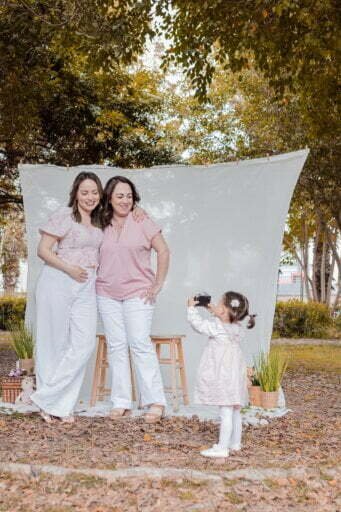If you have an older dog with separation anxiety, crate training can be a helpful solution to alleviate their stress and promote a sense of security when left alone. In this article, we will explore effective methods and tips on how to crate train an older dog with separation anxiety. With some patience, consistency, and positive reinforcement, you can create a safe and comfortable space for your furry friend, helping them overcome their anxiety and feel more at ease when you’re not around.
Understanding Separation Anxiety in Older Dogs
Separation anxiety is a common behavioral issue that many older dogs experience when they are left alone. It is important to understand what separation anxiety is and its causes in order to effectively address and alleviate your dog’s distress.
What is separation anxiety?
Separation anxiety refers to the intense fear or distress that dogs feel when they are separated from their owners. Older dogs may develop separation anxiety for various reasons, such as changes in their routine, loss of a companion, or a traumatic experience. This anxiety can manifest in destructive behavior, excessive barking or whining, or even physical symptoms like drooling or panting.
Causes of separation anxiety in older dogs
There are several factors that can contribute to the development of separation anxiety in older dogs. Major life changes, such as moving to a new home, the loss of a family member or pet, or a change in the owner’s schedule, can trigger anxiety in older dogs. Additionally, dogs that have not been properly socialized or have experienced trauma in the past may be more prone to developing separation anxiety.
Signs and symptoms of separation anxiety
It is important to recognize the signs and symptoms of separation anxiety in order to address the issue effectively. Some common signs of separation anxiety include excessive vocalization (barking or howling), destructive behavior (chewing furniture or scratching doors), attempts to escape, pacing, drooling, panting, and house soiling. These behaviors occur consistently when the dog is left alone, but not when the owner is present.
Preparing for Crate Training
Crate training can be an effective tool in managing separation anxiety in older dogs. However, it is essential to prepare both yourself and your dog for the process to ensure a successful outcome.
Choosing the right crate for your older dog
When selecting a crate for your older dog, it is important to choose one that is appropriately sized and comfortable. The crate should be large enough for your dog to stand, turn around, and lie down comfortably. Opt for a sturdy crate that provides proper ventilation and security.
Introducing the crate gradually
Introducing the crate gradually is crucial to ensure that your older dog feels comfortable and safe inside it. Start by placing the crate in a familiar and low-stress area of your home. Leave the door open and encourage your dog to explore the crate at their own pace. Gradually increase the time your dog spends inside the crate, making it a positive experience with treats, toys, and praise.
Creating a positive association with the crate
To help your older dog view the crate as a safe and inviting space, you can use positive reinforcement techniques. Place comfortable bedding, familiar toys, and treats inside the crate to encourage your dog’s positive association with it. Avoid using the crate as a form of punishment to prevent any negative associations.

Creating a Safe and Comfortable Environment
In addition to crate training, creating a safe and comfortable environment for your older dog can contribute to easing separation anxiety.
Selecting the appropriate location for the crate
Choosing the right location for the crate is essential to ensure your older dog feels secure. Place the crate in a quiet area away from excessive noise and foot traffic. Avoid areas with extreme temperature changes or direct sunlight that may cause discomfort. By selecting a suitable location, you can provide a calm and relaxing environment for your dog.
Making the crate cozy and inviting
To further enhance your dog’s comfort in the crate, make it cozy and inviting. Use soft bedding or blankets that your dog is familiar with to create a sense of familiarity and security. Additionally, consider covering the top and sides of the crate with a lightweight blanket to create a den-like atmosphere, reducing distractions and promoting relaxation.
Providing necessary comforts inside the crate
In order to make the crate an appealing space, ensure that your dog has access to their basic needs inside it. Provide fresh water and toys to keep them entertained and occupied. Remember to choose toys that are safe and suitable for your dog’s age and size to prevent any potential hazards.
Establishing a Routine
Establishing a consistent daily routine is crucial in managing separation anxiety and facilitating the crate training process for your older dog.
Creating a consistent daily schedule
Dogs thrive on routines, and following a consistent schedule can help alleviate their anxiety. Establish set meal times, walks, play sessions, and crate time. By providing structure and predictability, your older dog will feel more secure and less anxious about being left alone.
Incorporating crate time into the routine
Incorporating regular crate time into your dog’s daily routine is essential to acclimate them gradually. Start with short periods of crate time while you are at home and gradually increase the duration. By including crate time in their routine, your older dog will become accustomed to spending time in the crate without feeling distressed or anxious.
Setting up realistic expectations for progress
It is important to have realistic expectations when it comes to crate training and managing separation anxiety in older dogs. Each dog is different and may require varying amounts of time to adjust to the crate and overcome their anxiety. Patience, consistency, and positive reinforcement will go a long way in achieving progress. Celebrate small victories and remember that progress may take time.
Implementing the Crate Training Process
The crate training process consists of several steps that are essential in helping your older dog adjust to being alone in the crate.
Step 1: Introduction to the crate
Begin by introducing your dog to the crate in a positive and gentle manner. Allow them to explore the crate at their own pace, using treats or toys to create a positive association. Encourage them to enter the crate willingly without any force or coercion.
Step 2: Gradual confinement
Once your dog is comfortable entering the crate, start closing the door for short periods of time while you are present. Gradually increase the duration of confinement while providing treats and positive reinforcement. This step helps your older dog become familiar with being confined and promotes a sense of security.
Step 3: Increasing duration of crate time
As your dog becomes more comfortable with short periods of confinement, you can begin slowly increasing the duration of crate time. Start by leaving the room for a few minutes and gradually extend the time you spend away. Return to your dog calmly and reward them for remaining calm and relaxed while in the crate.
Using Positive Reinforcement Techniques
Positive reinforcement plays a crucial role in crate training an older dog with separation anxiety. Rewarding calm and relaxed behavior around the crate helps reinforce positive associations and builds trust.
Rewarding calm behavior around the crate
Whenever your dog displays calm and relaxed behavior around the crate, be sure to shower them with praise, treats, or their favorite toys. Positive reinforcement will help your dog associate the crate with positive experiences and reduce anxiety.
Using treats and toys as motivational tools
Treats and toys can be used as motivational tools to encourage your older dog to willingly enter and stay in the crate. Use high-value treats and special toys that your dog finds especially enticing. This will make the crate training process more enjoyable and reinforce positive behavior.
Avoiding punishment or negative reinforcement
It is crucial to avoid using punishment or negative reinforcement when crate training an older dog with separation anxiety. Punishment can increase anxiety and worsen the situation. Instead, focus on positive reinforcement and creating a safe and positive environment for your dog.

Managing Separation Anxiety During Crate Training
While implementing crate training, it is important to actively manage your dog’s separation anxiety to ensure their overall well-being.
Practicing short departures and arrivals
To help diminish separation anxiety, practice short departures and arrivals when leaving or returning home. Gradually increase the time you spend away, rewarding your dog for remaining calm in the crate. This will help your older dog become more accustomed to your absence and reduce their anxiety.
Desensitizing your older dog to your departure cues
Dogs often associate certain cues or behaviors with their owner’s departure, which can trigger anxiety. Desensitize your dog to these cues by performing them without actually leaving, gradually desensitizing them to the anxiety-inducing triggers. This helps break the association between your departure cues and anxiety.
Gradually increasing the time spent away from your dog
As your dog becomes more comfortable with shorter periods of crate time, gradually increase the length of time you spend away from them. Start by leaving for a few minutes and gradually extend the duration. By doing this gradually, your dog will begin to build confidence and learn that you will return.
Addressing Challenges and Setbacks
During the crate training process, you may encounter challenges or setbacks. It’s important to address these issues promptly and make the necessary adjustments.
Dealing with whining and barking in the crate
Whining and barking are common behaviors exhibited by dogs with separation anxiety. If your older dog displays these behaviors in the crate, it’s important to remain patient and avoid giving in to their demands. Instead, provide positive reinforcement when they display calm behavior and gradually work on extending their comfort level.
Handling excessive drooling or panting
Excessive drooling or panting in the crate may be signs of heightened anxiety. Ensure that the crate is well-ventilated and not causing discomfort. Provide calming cues like soft background music or a soothing scent. If excessive drooling or panting persists, consult with a veterinarian to address any underlying medical or behavioral issues.
Seeking professional help if necessary
If you are facing significant challenges or setbacks with crate training and managing your older dog’s separation anxiety, it may be beneficial to seek professional help. Consulting with a professional dog trainer or behaviorist who specializes in separation anxiety can provide you with valuable guidance and support.
Maintaining a Consistent Approach
Consistency is key in effectively addressing separation anxiety and crate training an older dog. Once you have established a routine and implemented the training process, it is important to maintain a consistent approach.
Sticking to the established routine
Stick to the daily routine you have established for your older dog. Consistency will provide them with a sense of security and stability. Avoid making sudden changes to the schedule or crate training process, as this may confuse your dog and trigger anxiety.
Continuing positive reinforcement techniques
Continue using positive reinforcement techniques throughout the crate training process. Consistently reward your dog for calm behavior and their willingness to enter and stay in the crate. Reinforce the positive association they have developed with the crate to further reduce anxiety.
Monitoring progress and making necessary adjustments
Regularly monitor your dog’s progress in crate training and managing separation anxiety. Be mindful of any setbacks or changes in behavior. If necessary, make adjustments to the training process, routine, or environment to address any new challenges that may arise. Each dog is unique, and it’s important to tailor the approach to their specific needs.
Alternative Options for Separation Anxiety
While crate training can be effective for managing separation anxiety in older dogs, it is not the only option. Depending on the severity of your dog’s anxiety and their individual needs, alternative options can be explored.
Consideration of medication or natural remedies
In some cases, medication or natural remedies may be recommended to manage severe separation anxiety in older dogs. Consult with a veterinarian to discuss the potential benefits and risks associated with medication or natural remedies. They can provide guidance and prescribe appropriate options if necessary.
Exploring behavior modification techniques
Behavior modification techniques can be employed in conjunction with crate training to address separation anxiety. This may include desensitization exercises, counterconditioning, or implementing calming routines. Work with a professional dog trainer or behaviorist to develop a behavior modification plan tailored to your older dog’s specific needs.
Consulting a professional dog trainer or behaviorist
If you are facing challenges in crate training an older dog with separation anxiety, seeking guidance from a professional dog trainer or behaviorist is highly recommended. These professionals have specialized knowledge and experience in working with dogs with separation anxiety. They can provide personalized strategies and ongoing support to help you and your dog overcome this issue.
Conclusion of How To Crate Train An Older Dog With Separation Anxiety
Crate training an older dog with separation anxiety requires patience, consistency, and a compassionate approach. By understanding the causes and signs of separation anxiety, preparing for crate training, creating a safe environment, establishing a routine, implementing the training process with positive reinforcement techniques, effectively managing separation anxiety, addressing challenges or setbacks, and maintaining a consistent approach, you can help alleviate your older dog’s distress and create a sense of security and comfort. Remember, each dog is unique, so be prepared to tailor the approach to your dog’s individual needs, and don’t hesitate to seek professional help if necessary. With time, understanding, and support, you can help your older dog overcome separation anxiety and enjoy a happier, more relaxed life.
Frequently Asked Questions:
How do you fix separation anxiety in senior dogs? Addressing separation anxiety in senior dogs involves a patient and gradual approach. Introduce positive associations with the crate, utilize calming aids, and consider professional guidance for a tailored plan.
Is it OK to put a dog with separation anxiety in a crate? Crating a dog with separation anxiety can provide a safe and secure space. Introduce the crate gradually, associate it with positive experiences, and monitor your dog’s response to ensure comfort.
Does ignoring your dog help with separation anxiety? Ignoring your dog briefly before leaving and returning can help normalize departures and arrivals, reducing anxiety. Combine this with crate training and positive reinforcement for a comprehensive approach.
How long does it take to fix separation anxiety in dogs? The time to alleviate separation anxiety varies. Consistency, positive reinforcement, and patience are key. Seek professional guidance for a personalized plan tailored to your dog’s needs.
Does separation anxiety in dogs get worse as they get older? While separation anxiety can manifest at any age, it may become more pronounced in senior dogs. Early intervention, positive reinforcement, and a consistent routine can help manage and alleviate symptoms.
What is the fastest way to cure separation anxiety in dogs? There’s no instant cure, but a combination of positive reinforcement, gradual desensitization, and consistent routines can expedite progress. Seek professional advice for a tailored approach.
What worsens separation anxiety in dogs? Changes in routine, abrupt departures, and inconsistent interactions can exacerbate separation anxiety. Maintain a predictable schedule, introduce positive associations, and consider professional help when needed.
Will the dog eventually stop crying in the crate? With patient training and positive associations, most dogs can learn to be comfortable in their crates and reduce or eliminate crying. Consistency and positive reinforcement are key to success.
Where should a dog with separation anxiety sleep? Place your dog’s bed or crate in a quiet, familiar area where they feel secure. Experiment with different locations to find what provides the most comfort and minimizes anxiety.
Should I say goodbye to my dog when I leave? Limit emotional goodbyes, as they can heighten anxiety. Keep departures low-key, and gradually increase the time you spend away to help your dog become accustomed to your absence.
Should I let my dog sleep with me if he has separation anxiety? Allowing your dog to sleep with you can provide comfort, but it’s essential to establish boundaries. A comfortable crate near your bed can offer a secure space while maintaining a sense of closeness.
How do I train my dog to leave his crate alone? Gradually extend the time your dog spends in the crate during non-departure periods. Associate the crate with positive experiences, use treats, and ensure the crate is a welcoming and enjoyable space.
How can I help my dog with separation anxiety naturally? Natural remedies, such as calming pheromones, soothing music, and interactive toys, can aid in managing separation anxiety. Consult with a veterinarian for guidance on supplements or herbal remedies.
How do you crate train an older dog? Introduce the crate gradually, associate it with positive experiences, and use treats and praise. Gradually increase crate time and ensure the dog sees the crate as a safe and enjoyable space.
How do I stop my dog from having severe separation anxiety? Addressing severe separation anxiety may require a comprehensive approach, including gradual desensitization, positive reinforcement, and potentially, professional help. Consult with a veterinarian or a certified dog trainer.
Why did my dog suddenly develop separation anxiety? Sudden onset separation anxiety can be triggered by various factors, including changes in routine, environment, or traumatic experiences. Identifying the cause is crucial for developing an effective intervention plan.
What age is the hardest with a dog? The challenges of dog ownership can vary, but adolescence (around 6 months to 2 years) is often considered a challenging phase. Consistent training, positive reinforcement, and patience are essential during this period.
Which breeds are more prone to separation anxiety? Breeds with strong bonds to their owners, such as Retrievers, Bichons, and German Shepherds, may be more prone to separation anxiety. However, individual temperament and experiences also play significant roles.
How do you treat anxiety in a crate? Treating anxiety in a crate involves positive associations, gradual desensitization, and creating a comfortable environment. Incorporate calming aids, such as soothing music or toys, and seek professional guidance if needed.
More about how to crate train a dog here.

